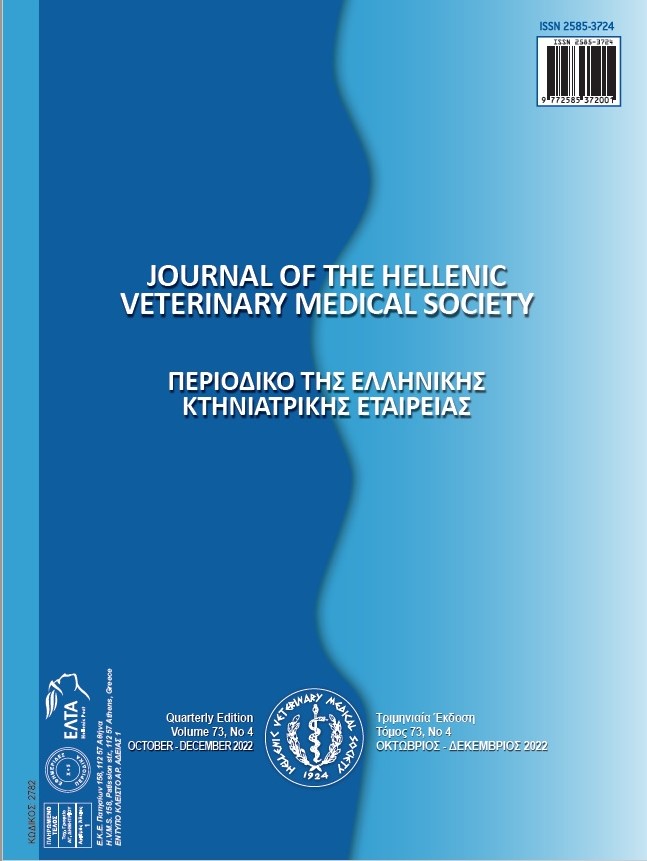Occurrence, antibiogram, high-level vancomycin and aminoglycosides resistance and potential virulence factors of enterococci in dogs in Nigeria
Аннотация
Abstract
This study was conducted to isolate enterococci from dogs in Nigeria, and to determine the potential virulence, antibiotic susceptibility, phenotypic vancomycin (VAN), high-level ampicillin (AMP) and aminoglycosides susceptibility profile of the isolates. Rectal swabs were collected from 295 randomly-selected, clinically-healthy dogs. The isolation of enterococci was done using Slanetz and Bartley enterococcal selective medium. The resistance of 150 non-repetitive isolates was determined using disc diffusion method. VAN resistance was assessed by high-level disc diffusion and agar-screening methods. High-level AMP and aminoglycosides (gentamicin and streptomycin) resistance was determined by agar-screening method. Potential virulence factors were assayed using phenotypic methods. Out of 295 samples, 234 (80.7%) gave positive growth. From these, 250 enterococcal isolates comprised 229 (91.6%) non-pigmented and 21 (8.4%) pigmented strains, were obtained. Resistance of the isolates was 89% to erythromycin, 92% to rifampicin, 77% to chloramphenicol, 83% to tetracycline, 64% to ciprofloxacin, 32.7% to VAN, 24.7% to high-level streptomycin (HLS) and 6% to high-level gentamicin (HLG). Among 150 non-repetitive resistant isolates, 144 (96%), including all the VAN-, HLS- and HLG-resistant strains, exhibited resistance to at least 3 classes of antibiotics. The mean multiple antibiotic resistance index was 0.54 (range = 0.22 – 0.89). Of these 150 isolates, 94 (62.7%), including all the VAN-, HLS- and HLG-resistant strains, displayed virulence potentials as biofilm (44.7%), surface-layer (13.8%), haemolysin (21.3%), gelatinase (40.4%), caesinase (10.6%) and deoxyribonuclease (12.8%) activities. This study showed that dogs in Nigeria are potential reservoirs and disseminators of potentially-virulent, multidrug-, VAN- and high-level aminoglycosides-resistant enterococci.Article Details
- Как цитировать
-
Anyanwu, M., Eze, U., Nnamani, J., Ikenna-Ezeh, N., Akpa, P., Okorie-kanu, O., & Anene, B. (2023). Occurrence, antibiogram, high-level vancomycin and aminoglycosides resistance and potential virulence factors of enterococci in dogs in Nigeria. Journal of the Hellenic Veterinary Medical Society, 73(4), 4689–4696. https://doi.org/10.12681/jhvms.27783
- Выпуск
- Том 73 № 4 (2022)
- Раздел
- Research Articles

Это произведение доступно по лицензии Creative Commons «Attribution-NonCommercial» («Атрибуция — Некоммерческое использование») 4.0 Всемирная.
Authors who publish with this journal agree to the following terms:
· Authors retain copyright and grant the journal right of first publication with the work simultaneously licensed under a Creative Commons Attribution Non-Commercial License that allows others to share the work with an acknowledgement of the work's authorship and initial publication in this journal.
· Authors are able to enter into separate, additional contractual arrangements for the non-exclusive distribution of the journal's published version of the work (e.g. post it to an institutional repository or publish it in a book), with an acknowledgement of its initial publication in this journal.
· Authors are permitted and encouraged to post their work online (preferably in institutional repositories or on their website) prior to and during the submission process, as it can lead to productive exchanges, as well as earlier and greater citation of published work.




